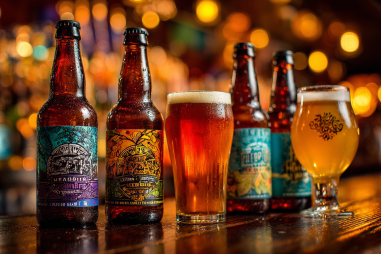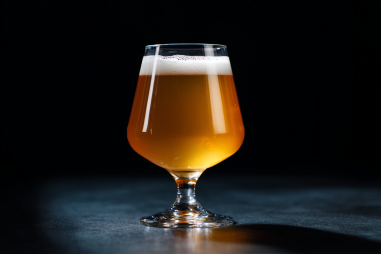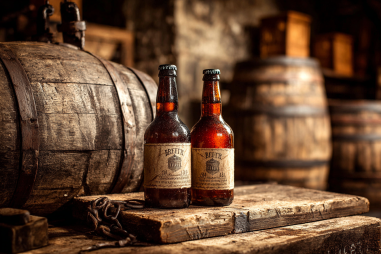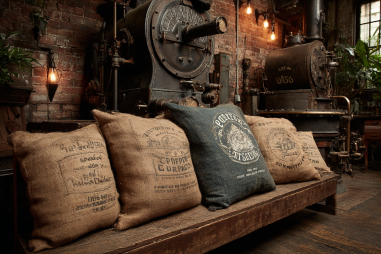When it comes to unique and complex beer flavors, few styles have captured the imagination of brewers and beer enthusiasts quite like Brett beer. This intriguing category is defined largely by the use of Brettanomyces yeast, affectionately known as “Brett,” which imparts funky, earthy, and sometimes fruity characteristics that set these beers apart from the traditional lagers, ales, and stouts. But Brett beer is more than just a curious offshoot of brewing—it has a rich history steeped in tradition and innovation, from its early accidental appearances in rustic brewing to its celebrated status in today’s craft beer scene.
What is Brett Beer?
Brett beer is any beer that either prominently features the Brettanomyces yeast or has undergone fermentation or aging with this particular yeast strain. Unlike the more common Saccharomyces cerevisiae yeast used in most beer fermentations, Brettanomyces produces a very different profile of flavors and aromas. These can range from barnyard funk and leather to tropical fruit and spice. While some beer drinkers find its funky characteristics challenging, others cherish Brett beer’s unique character for the complexity and depth it offers.
The history of Brett beer reveals its transition from a largely unintentional fermentation agent to a beloved tool of artisanal brewers who use it purposefully to craft distinct and innovative beers.
Early Encounters with Brettanomyces in Traditional Brewing
The roots of Brett beer trace back to long before the era of modern brewing science, in the days when beer was often fermented spontaneously or with wild yeast strains. Brewers did not initially understand yeast in the way we do today, so many early beers were inoculated with whatever wild yeasts and bacteria happened to be present in the brewery environment. Brettanomyces was often one of these wild yeasts.
Accidental fermentation by Brettanomyces frequently led to off-flavors and aromas that brewers sometimes considered flaws. At times, Brett could overpower or create sourness and funkiness that deviated from the intended beer profile. For this reason, for many years Brett was often regarded as a contaminant, rather than a desirable contributor to brewing.
However, even in these early encounters, Brettanomyces set the stage for some of the more unique and intriguing beers produced in rustic breweries and farmhouse settings.
Historical Use of Brett in European Farmhouse Ales
While Brettanomyces was once seen as an unwelcome element, it became a defining characteristic of certain traditional beer styles—particularly in rural Europe. In regions of Belgium, France, and parts of Scandinavia, farmhouse ales were often brewed using wild or mixed yeast cultures that included Brettanomyces. These beers were crafted in an environment where spontaneous fermentation was the norm, and Brett helped shape the flavor profiles of beloved traditional styles.
For example, the famous Belgian lambic, gueuze, and certain Flemish red ales rely heavily on Brettanomyces yeast to develop their signature sour, funky notes during long maturation periods. Over time, Brett became an integral part of the identity of these beers, prized for the complexity and liveliness it contributed. This historical use laid the groundwork for Brett’s acceptance and embrace by more modern brewers and beer lovers.
Modern Resurgence in Craft Beer Culture
In the past few decades, Brett beer has experienced a remarkable revival, fueled by the craft beer movement’s passion for experimentation and rediscovery of traditional brewing techniques. Brewers began to intentionally cultivate Brettanomyces in their beers, seeking to harness its complex flavors intentionally rather than fearing it as a ruinous contaminant.
This resurgence can be credited to a growing appreciation for sour and wild ales, as well as advances in fermentation science that allow brewers to control Brett’s activity more precisely. Today, Brett beers span a broad spectrum, from wildly funky, sour farmhouse ales to more subtle and balanced interpretations that blend Brett with clean yeast strains.
Brett beers have also become a symbol of brewing innovation, inspiring brewers to push flavor boundaries and craft beers with layers of complexity and surprise.
Key Breweries Pioneering Brett Beers
Several pioneer breweries have been instrumental in bringing Brett beer to the forefront of the craft beer community:
- Rodney’s Brouwerij in Belgium, whose traditional lambics introduced many to Brett’s bold funkiness.
- Jester King Brewery
- The Bruery
- 3 Floyds Brewing Co.
These and other breweries have not only embraced Brett as an essential ingredient but have also educated consumers and set quality standards for what Brett beer can be.
The Impact of Brett on Contemporary Beer Innovation
Brettanomyces, once feared for its unpredictable fermentation, has now become a powerful tool within the hands of innovative brewers. Its influence is felt beyond just traditional-style farmhouse ales, making inroads into IPAs, stouts, saisons, and hybrid styles where brewers seek complexity, acidity, and a touch of funk.
The presence of Brett inspires new aging techniques, collaborations between breweries, and even cross-brewing with wild yeast from different regions to highlight terroir—the impact of geography and environment on fermentation flavor. Moreover, Brett’s distinct metabolic profile has encouraged scientists and brewers to experiment with novel yeast blends, fostering a dynamic and evolving landscape in brewing.
As consumer palates become more adventurous, Brett beer’s tangy funk and unique aromas continue to push beer innovation forward, broadening the spectrum of what beer can taste like.
Brett Beer’s Legacy and What Lies Ahead
Brett beer has traveled an incredible journey from a brewing nuisance to a celebrated contributor to beer diversity. Its legacy is deeply intertwined with old-world tradition and new-world creativity. More than a niche style, Brett beer embodies brewing’s past and future—a bridge connecting rustic farmhouse ales with cutting-edge craft beer innovation.
Looking to the future, Brettanomyces will likely continue to inspire brewers to push boundaries, experiment with fermentation techniques, and craft beers that challenge and delight drinkers around the globe. For those curious about diving into beers that boast character, complexity, and a bit of funk, Brett beer offers an unparalleled adventure.
Whether you’re a seasoned beer enthusiast or new to the phenomenon, exploring Brett beer means embracing centuries of brewing history alongside modern artistry—truly a story worth savoring with every sip.







